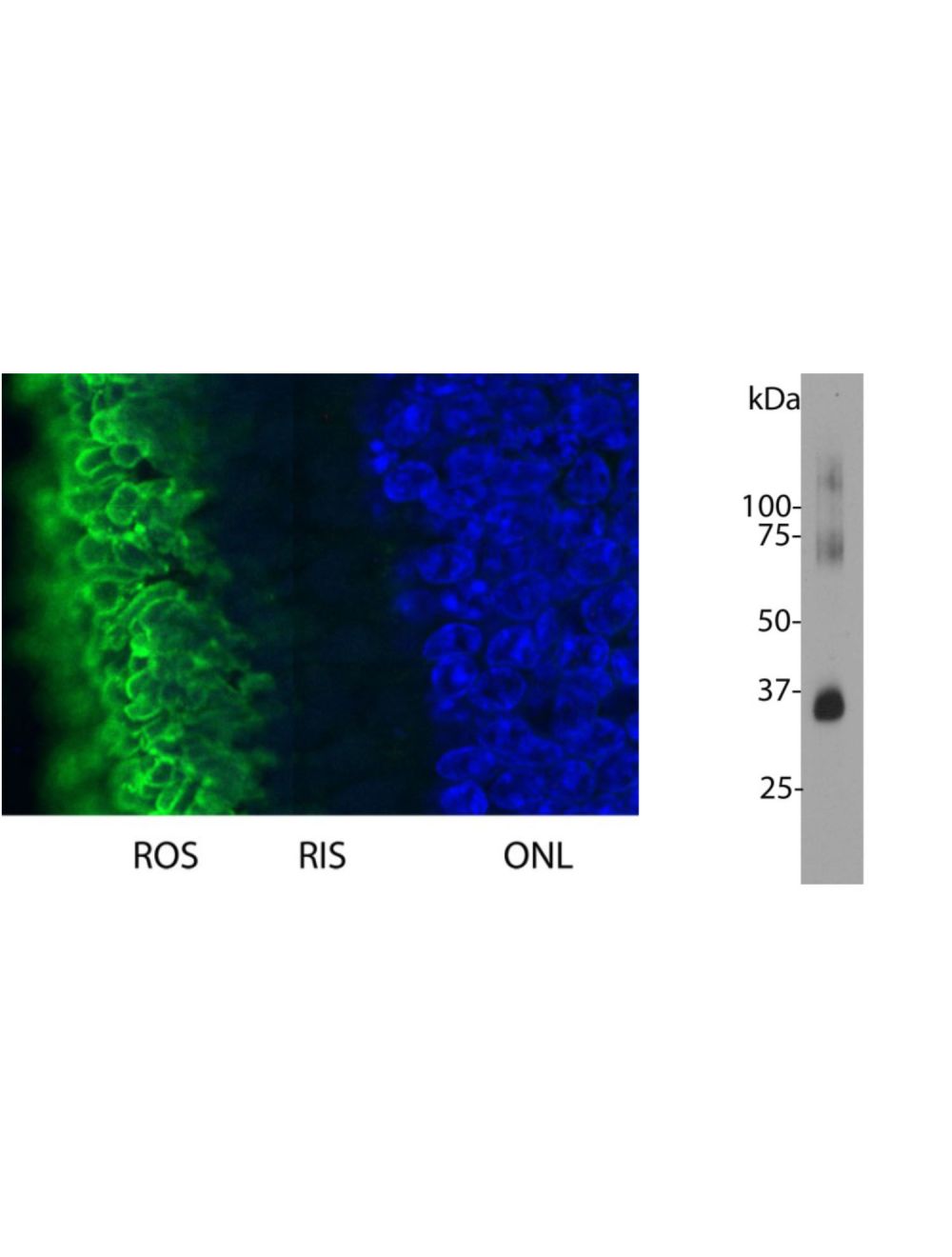Rhodopsin, Mouse Monoclonal Antibody
As low as
US$317.00
Only %1 left
Catalog Number
M-1815
- Product Name Rhodopsin, Mouse Monoclonal Antibody
- Product Description Mouse anti-Rhodopsin Monoclonal Antibody (Unconjugated), suitable for WB, IHC-Frozen.
- Application(s) IHC-Frozen, WB
- Antibody Host Mouse
- Antibody Type Monoclonal
- Specificity Bovine,reacts with Human, Rat, Mouse, Cow, Pig. Expected to react with other mammalian species.
- Species Reactivity Bovine, Human, Mouse, Pig, Rat
- Immunogen Description Purified bovine rhodopsin
- Conjugate Unconjugated
- Purity Description Protein G purified
- Regulatory Status For research use only.
Product Info
- Product Description Mouse anti-Rhodopsin Monoclonal Antibody (Unconjugated), suitable for WB, IHC-Frozen.
- Application(s) IHC-Frozen, WB
- Application Details Western blotting (1:5,000) and Immunohistochemistry (1:1,000). Due to the highly hydrophobic nature of rhodopsin, avoid boiling samples in SDS-PAGE sample buffer for rhodopsin analysis by Western Blotting, as this will result in extensive aggregation of the rhodopsin protein and appearance of high molecular weight bands. Biosensis recommends optimal dilutions/concentrations should be determined by the end user.
- Target Rhodopsin
- Specificity Bovine,reacts with Human, Rat, Mouse, Cow, Pig. Expected to react with other mammalian species.
- Target Host Species Bovine
- Species Reactivity Bovine, Human, Mouse, Pig, Rat
- Antibody Host Mouse
- Antibody Type Monoclonal
- Antibody Isotype IgG1
- Clone Name B630
- Conjugate Unconjugated
- Immunogen Description Purified bovine rhodopsin
- Purity Description Protein G purified
- Format Lyophilized from PBS buffer pH 7.2-7.6 with 0.1% trehalose, and sodium azide
- Reconstitution Instructions Spin vial briefly before opening. Reconstitute with 100 µL sterile-filtered, ultrapure water to achieve a 1 mg/mL concentration. Centrifuge to remove any insoluble material.
- Storage Instructions Store lyophilized antibody at 2-8°C. After reconstitution divide into aliquots and store at -20°C for long-term storage. Store at 2-8°C short-term (up to 4 weeks) with an appropriate antibacterial agent. Avoid repetitive freeze/thaw cycles.
- Batch Number Please see item label.
- Expiration Date 12 months after date of receipt (unopened vial).
- Uniprot Number P02699
- Uniprot Number/Name P02699 (OPSD_BOVIN)
- Scientific Background Photoreceptor required for image-forming vision at low light intensity. Required for photoreceptor cell viability after birth (By similarity). Light-induced isomerization of 11-cis to all-trans retinal triggers a conformational change that activates signaling via G-proteins (PubMed:10926528, PubMed:12044163, PubMed:11972040, PubMed:16908857, PubMed:16586416, PubMed:17060607, PubMed:17449675, PubMed:18818650, PubMed:21389983, PubMed:22198838, PubMed:23579341, PubMed:25205354, PubMed:27458239). Subsequent receptor phosphorylation mediates displacement of the bound G-protein alpha subunit by the arrestin SAG and terminates signaling (PubMed:1396673, PubMed:15111114). Ref: uniprot.org
- Shipping Temperature 25°C (ambient)
- UNSPSC CODE 41116161
- Regulatory Status For research use only.

 1800 605-5127
1800 605-5127 +61 (0)8 8352 7711
+61 (0)8 8352 7711

